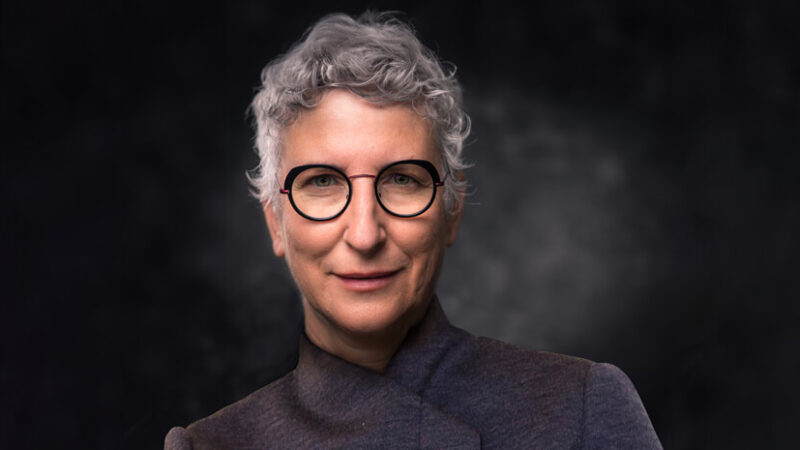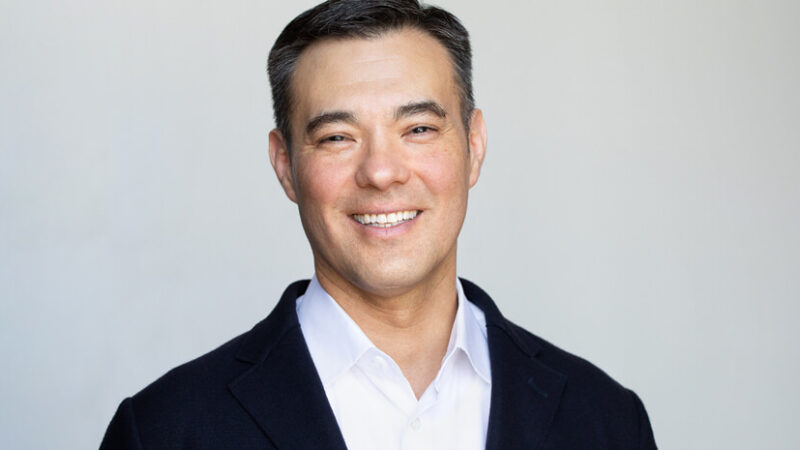-
E117: The Real Work: Letting Go from Within
Michael Singer — October 2, 2025
True spirituality isn’t about mystical experiences or lofty ideals—it’s about honestly facing...
-
Once More: Reflections on Reincarnation and the Gap Between Lives
Tami Simon — September 26, 2025
In this special reflection episode of Insights at the Edge host Tami Simon looks back on her...
-
Honey Tasting Meditation: Build Your Relationship with Sweetness
There is a saying that goes “hurt people hurt people.” I believe this to be true. We have been...
Written by:
Amy Burtaine, Michelle Cassandra Johnson
-
Many Voices, One Journey
The Sounds True Blog
Insights, reflections, and practices from Sounds True teachers, authors, staff, and more. Have a look—to find some inspiration and wisdom for uplifting your day.
Standing Together, and Stepping Up
Written By:
Tami Simon -
The Michael Singer Podcast
Your Highest Intention: Self-Realization
Michael Singer discusses intention—"perhaps the deepest thing we can talk about"—and the path to self-realization.
This Week:
E116: Doing the Best You Can: The Path to Liberation -
Many Voices, One Journey
The Sounds True Blog
Insights, reflections, and practices from Sounds True teachers, authors, staff, and more. Have a look—to find some inspiration and wisdom for uplifting your day.
Take Your Inner Child on Playdates
Written By:
Megan Sherer
600 Podcasts and Counting...
Subscribe to Insights at the Edge to hear all of Tami's interviews (transcripts available, too!), featuring Eckhart Tolle, Caroline Myss, Tara Brach, Jack Kornfield, Adyashanti, and many more.
Most Recent
Tami Simon: Being a Spiritual Entrepreneur
A magazine article about Sounds True founder Tami Simon referred to her as a “spiritual entrepreneur.” At first, Tami wasn’t sure about the label. Yet over time, she came to appreciate and embrace it. Today, the art of spiritual entrepreneurship is a central facet of Sounds True’s Inner MBA® program.
In this host-only episode of Insights at the Edge, Tami shares her thoughts and feelings about what it means to lead a company dedicated to the well-being of its employees as equally as it is to business success. For anyone looking to bridge their innermost values with how they make a living, Tami reveals seven principles of the spiritual entrepreneur, with insightful guidance on honoring the voice of the heart; leading with presence; why relationships need to come first; creating a culture of care, engagement, and well-being; alternating between high performance and good rest; how to embrace challenges as growth opportunities; claiming our personal agency and doing the work of “cleaning up”; business as a means to address real social needs; maintaining trust in the unfolding process; making a commitment to “lift each other up” in the way we do business; recognizing our interdependence; and more.
Jeremy Hunter: Untaught Essentials for Business Humans
How do you transform your mind, and how do you do it in real time amidst the challenges of work and life? How do you remain openhearted and generous in a competitive or even cutthroat environment? These aren’t usually the kinds of questions that businesspeople ask themselves. Yet it’s become Jeremy Hunter’s mission to help today’s entrepreneurs and organizational leaders realize the incredible value of asking—and answering—these deep questions.
In this podcast, Tami Simon speaks with the core faculty member of Sounds True’s Inner MBA® program and a renowned authority on mindfulness and leadership about the “untaught essentials for business humans,” discussing the lifesaving practice of meditation; training our perception (and not just our intellect); why managers must learn how to manage themselves; placing a high value on attention and presence; examining how you construct your experience; using spiritual tools and teachings to create real business results; unconditional love; developing somatic intelligence; why it’s so important to be grounded as a leader; setting the emotional tone for the group you work with; activating our collaborative superpowers by caring about and meeting each other’s needs; transforming fear and anxiety into vitality and joy; pleasure, enjoyment, and recovering from “Frivolity Deficiency Syndrome”; acknowledging what is beautiful in your world; gratitude vs. appreciation; the opportunity for businesspeople in our times of uncertainty and accelerating change; creating a relationship with solidity; letting go of the beliefs and behaviors that no longer fit; and more.
Note: This episode originally aired on Sounds True One, where these special episodes of Insights at the Edge are available to watch live on video and with exclusive access to Q&As with our guests. Learn more at join.soundstrue.com.
Maggie Smith: Writing in a Way That Is Brave, Real, an...
Bestselling poet Maggie Smith has a gift for embracing the complexity of our human experience—and for writing about it with piercing intensity, clarity, and beauty. In this podcast, Tami Simon speaks with Maggie about her approach to her craft and to life, and how writing can serve as a pathway to self-discovery and release.
Featuring a reading of the beloved poem “Good Bones,” this insightful episode of Insights at the Edge explores metaphor and life in sensory experience; poetic memoir; Maggie’s “drill-down” exercise; entering the territory of our pain; balancing a creative life and domestic responsibilities; the notion of “containing multitudes”; being an integrated, whole person; intuition and the deep knowing of what is brave, real, and true; sitting with the splinters (instead of sanding them down); allowing “full wingspan” for both individuals in a relationship; endurance versus closure; forgiveness versus acceptance; taking a bird’s-eye view of our experiences; making life more beautiful for everyone; and more.
Note: This episode originally aired on Sounds True One, where these special episodes of Insights at the Edge are available to watch live on video and with exclusive access to Q&As with our guests. Learn more at join.soundstrue.com.
Customer Favorites
Seane Corn: Your Pain Is Your Purpose
Seane Corn is an internationally renowned yoga teacher, activist, and the founder of Off the Mat, Into the WorldⓇ. With Sounds True, she has published a new book, Revolution of the Soul: Awaken to Love Through Raw Truth, Radical Healing, and Conscious Action. In this episode of Insights at the Edge, Tami Simon speaks with Seane about the necessity of loving without hesitation and with heart wide open—as well as why this is so difficult for many. Seane considers the past traumas that have informed both her lowest moments and her greatest successes. Tami and Seane also talk about the moral imperative to speak the truth about abusers, even if that might mean a loss of social standing. Finally, Seane comments on the realization of her own social privilege and why people with privilege are obligated to leverage it for the greater good. (75 minutes)
Shauna Shapiro: Good Morning, I Love You
Shauna Shapiro, PhD, is a teacher, public speaker, and author whose published works include The Art and Science of Mindfulness and Mindful Discipline. With Sounds True, she has published Good Morning, I Love You: Mindfulness and Self-Compassion Practices to Rewire Your Brain for Calm, Clarity, and Joy. In this episode of Insights at the Edge, Tami Simon speaks with Shauna about the neurology of self-image and why conscious acts of self-compassion greatly enhance our well-being. Shauna comments on practicing mindfulness with warmth and open affection, as well as how this gradually cultivates empathy. Tami and Shauna also talk about “trusting the good heart” and the possibility of changing our baseline levels of happiness. Finally, they discuss why changing ingrained habits is so difficult and the subtle power of the daily self-affirmation, “Good morning. I love you.”(55 minutes)
Free mindfulness gifts!
Friends, please enjoy two free downloads featuring teachings and guided practices from some of the most respected voices in the fields of mindfulness and healing, including Jon Kabat-Zinn, Tara Brach, Jack Kornfield, Kelly McGonigal, Dan Siegel, Sharon Salzberg, Rick Hanson, and Shinzen Young.
Stream or download The Science of Mindfulness and The Practice of Mindfulness now!
 The Science of Mindfulness: How Changing Your Brain Changes Your Life
The Science of Mindfulness: How Changing Your Brain Changes Your Life
To be mindful is to pay attention to whatever arises in the moment. Whether in response to thoughts, feelings, emotions, or bodily sensations, when we are present to our experience in an open and nonjudgmental way, we are practicing mindfulness. With The Science of Mindfulness, you will join five Sounds True authors for an introductory program exploring the ways that science has begun to validate what the world’s wisdom traditions have said for centuries: mindfulness practice has the power to transform every facet of our lives.
Tracks include:
1. “What Is Mindfulness?” from Mindfulness for Beginners by Jon Kabat-Zinn
The teacher who brought mindfulness meditation into the mainstream of medicine and society describes the many benefits of daily practice.
2. “Mindfulness and the Brain” from The Mindful Brain by Daniel J. Siegel, MD
Dr. Siegel explains the effects of mindfulness practice on our mental health and physiology.
3. “Happiness, Enlightenment, and the Brain” from The Enlightened Brain by Rick Hanson, PhD
We know more about the brain today than ever before. Dr. Hanson discusses how we can use this knowledge to cultivate lasting experiences of happiness and fulfillment.
4. “The Perception of Separation” from Meditation and Psychotherapy by Tara Brach, PhD
Tara Brach explains how the practice of mindfulness can help us break through the false sense of separation that so often leads to suffering.
5. “Mindfulness and the Experiencing Self” from The Neuroscience of Change by Kelly McGonigal, PhD
Dr. McGonigal describes an alternative state of mind known as “the experiencing self,” a positive alternative to harmful default states that we can cultivate through practice.
 The Practice of Mindfulness: 6 Guided Practices
The Practice of Mindfulness: 6 Guided Practices
Mindfulness is a simple yet profound practice that transforms lives. The Practice of Mindfulness invites you to join six Sounds True authors who are each considered leaders in bringing the many benefits of mindful living into our personal and professional lives. Enjoy six beginner-friendly guided meditations aimed at increasing harmony in mind and body in order to open us to the fullness of our experience from one moment to the next.
Tracks include:
1. “Breathing Meditation” from Meditation for Beginners by Jack Kornfield
2. “Meditation for Relaxation” from Meditation by Shinzen Young
3. “Mindfulness Meditation” from The Neuroscience of Change by Kelly McGonigal
4. “A Pause for Presence” from Mindfulness Meditation by Tara Brach
5. “Meditation on Compassion” from Guided Meditations for Love and Wisdom by Sharon Salzberg
6. “The Healing Lake Meditation” from Meditation for Optimum Health by Jon Kabat-Zinn





